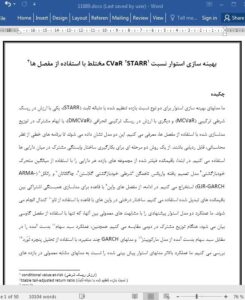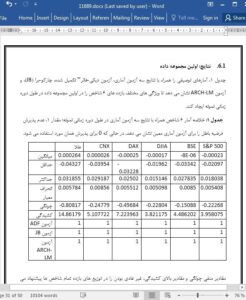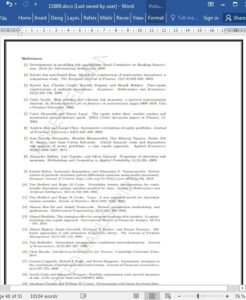Abstract
We introduce the robust optimization models for two variants of stable tail-adjusted return ratio (STARR), one with mixed conditional value-at-risk (MCVaR) and the other with deviation MCVaR (DMCVaR), under joint ambiguity in the distribution modeled using copulas. The two models are shown to be computationally tractable linear programs. We apply a two-step procedure to capture the joint dependence structure among the assets. We first extract the filtered residuals from the return series of each asset using AutoRegressive Moving Average Glosten Jagannathan Runkle Generalized Autoregressive Conditional Heteroscedastic (ARMA-GJR-GARCH) model. Subsequently, we exploit the regular vine copulas to model the joint dependence among the transformed residuals. The tree structure in the regular vines is accomplished using Kendall’s tau. We compare the performance of the proposed two robust models with their conventional counterparts when the joint distribution in the latter is described using Gaussian copula only. We also examine the performance of the obtained portfolios against those from the Markowitz model and multivariate GARCH models using the rolling window analysis. We illustrate the superior performance of the proposed robust models than their conventional counterpart models on excess mean returns, Sortino ratio, Rachev ratio, VaR ratio, and Treynor ratio, on three data sets comprising of indices across the globe.
1. Introduction
Since the beginning of the era of modern portfolio theory with the pioneering work of Markowitz [53], where the measure of risk in investment is taken to be the standard deviation of return distribution, the literature has seen a proliferation of several rewardrisk optimization models. These models have a common aim to find an optimal portfolio of maximum return and minimum risk. The bi-objective models generally are transformed into single objective problems of maximizing return given an upper bound on risk or minimizing risk given a lower bound on the return or maximizing the combined returnrisk utility function for a given risk-aversion parameter. The optimal solutions of the resulting problems are sensitive to the choice of the upper bound, lower bound, and riskaverse parameter, respectively.
7. Conclusions
Portfolio return is a multivariate random variable whose distribution depends on the underline dependence structure among its constitutes. This dependency needs to be capture carefully for correct investment decisions. Copula theory is a widely accepted mechanism to capture the dependency structure by accounting for most stylized features present in the financial data, like asymmetry, fat-tails, and nonlinearity. However, the ever-changing market dynamics is more complicated to be adequately represented by a single copula function. We propose to use mixture copulas, a linear combination of various copulas, to fit the dependence structure in portfolio returns.











